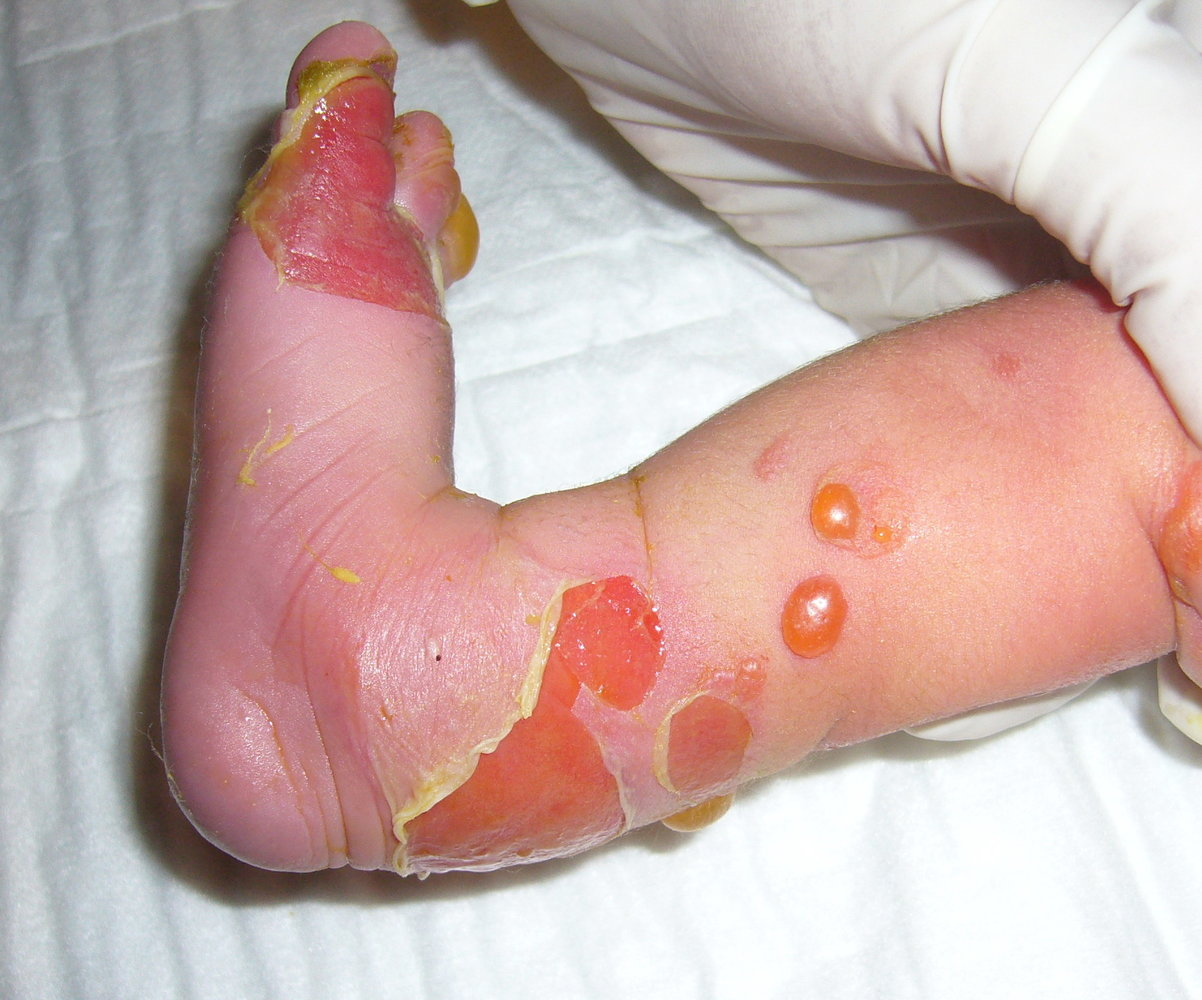Blistering diseases differential diagnostics
Link to original
Feature Pemphigus Vulgaris (PV) Bullous Pemphigoid (BP) Dermatitis Herpetiformis (DH) Epidermolysis Bullosa (EB) Bullous Impetigo Pathophysiology Autoimmune (IgG) vs. Desmoglein 1 & 3 (Desmosomes) Autoimmune (IgG) vs. Hemidesmosomes (BP180, BP230) Autoimmune (IgA) deposition at dermal papillae Genetic defect in adhesion proteins (e.g., Keratin, Collagen) Bacterial toxin from S. aureus cleaves Desmoglein 1 Epidermal Split Intraepidermal (Acantholysis) Subepidermal Subepidermal Varies by type (intra- or subepidermal) Intraepidermal (Stratum granulosum) Clinical Presentation Flaccid, easily ruptured bullae; erosions. Skin + oral mucosa. Tense, firm bullae on erythematous/urticarial base. Intense pruritus. Extremely pruritic vesicles on extensor surfaces (elbows, knees). Blisters/erosions with minor trauma. Onset in infancy/childhood. Flaccid bullae that rupture, leaving thin, varnish-like crust. Nikolsky Sign Positive Negative Negative Positive Positive Immunofluorescence Net-like (“chicken wire”) IgG pattern in epidermis Linear IgG & C3 at dermoepidermal junction Granular IgA deposits at dermal papillae tips Not used for autoantibodies; used to ID missing protein Not applicable Histology Acantholytic cells (Tzank cells); suprabasal split Eosinophilic infiltrate; non-acantholytic split below epidermis. Neutrophilic microabscesses at dermal papillae tips Depends on specific gene defect Cleavage within stratum granulosum; few inflammatory cells Key Association Other autoimmune diseases, drug-induced (penicillamine) Elderly population (>60 years) Celiac Disease (strong!) Familial inheritance Typically affects children Treatment Corticosteroids, Rituximab Topical/systemic corticosteroids Dapsone, gluten-free diet Supportive care, wound management Antibiotics (e.g., Mupirocin, Cephalexin)
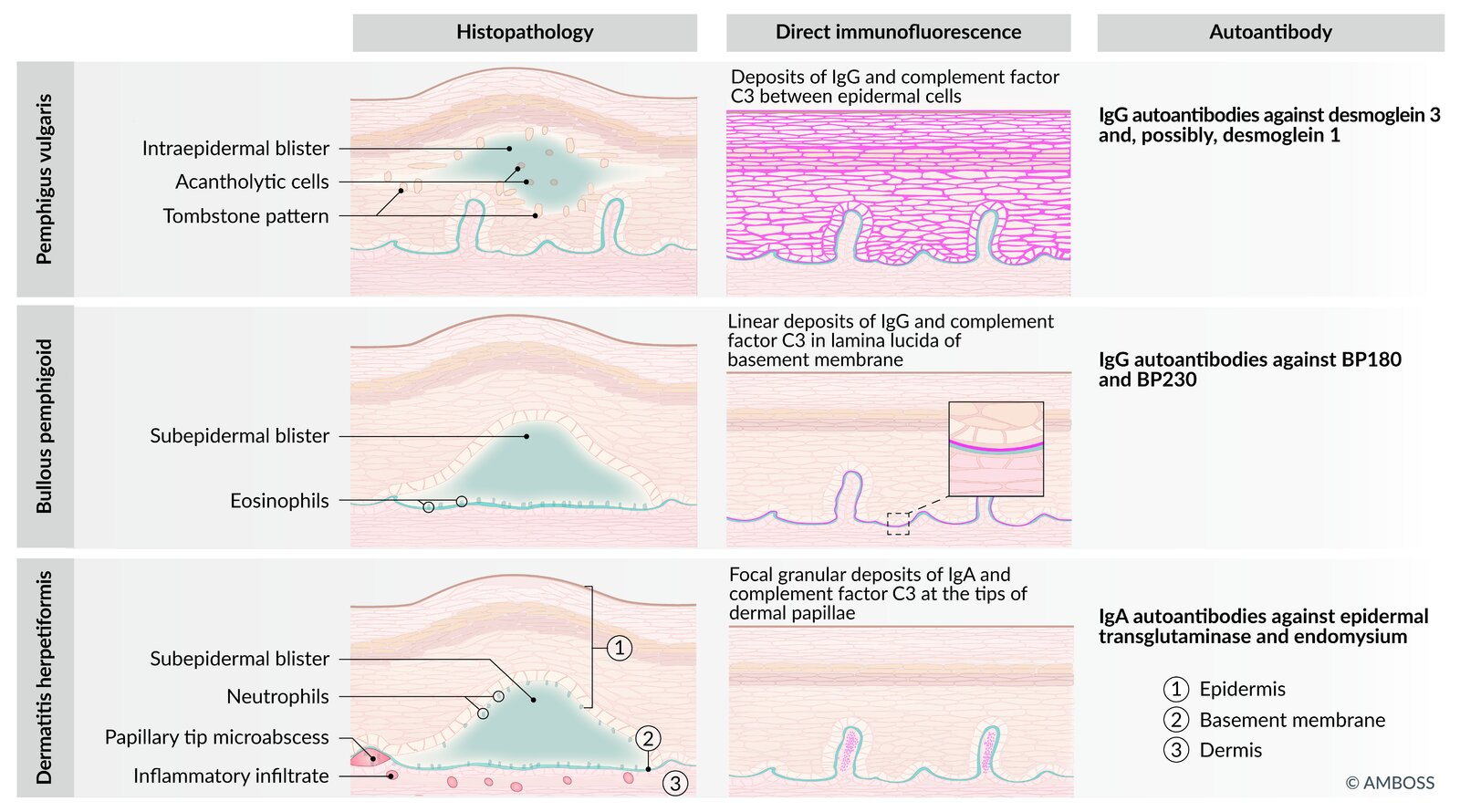
Bullous pemphigoid
Etiology
- Type II hypersensitivity reaction
- Antihemidesmosome antibodies (IgG)
Clinical findings
- Large, tense, subepidermal blisters on normal, erythematous, or erosive skin
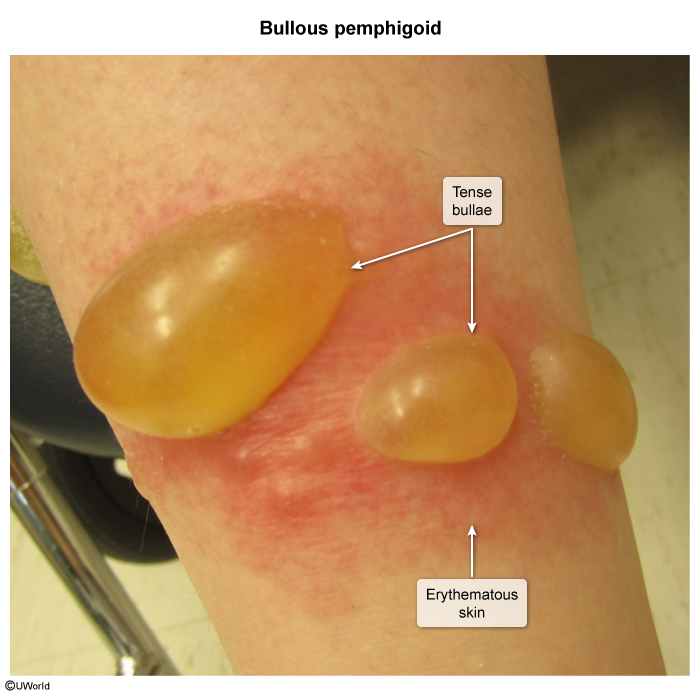
- Intensely pruritic lesions, possibly hemorrhagic, heal without scar formation
- Distributed on palms, soles, lower legs, groin, and axillae
- Oral involvement is rare
Diagnostics
- Tzanck test, Nikolsky sign: negative
- Histology and immunohistochemistry
- Subepidermal vesicle formation
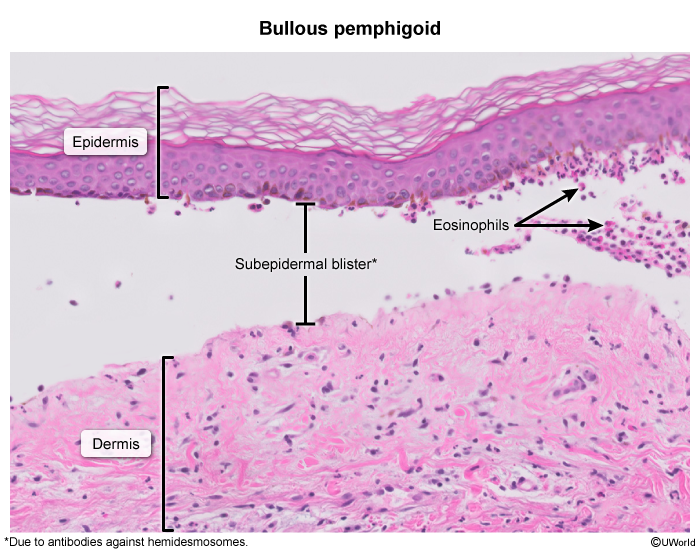
- Eosinophil-rich infiltrate in underlying dermis
- Immunofluorescence: deposition of linear IgG and C3 along the dermo-epidermal junction
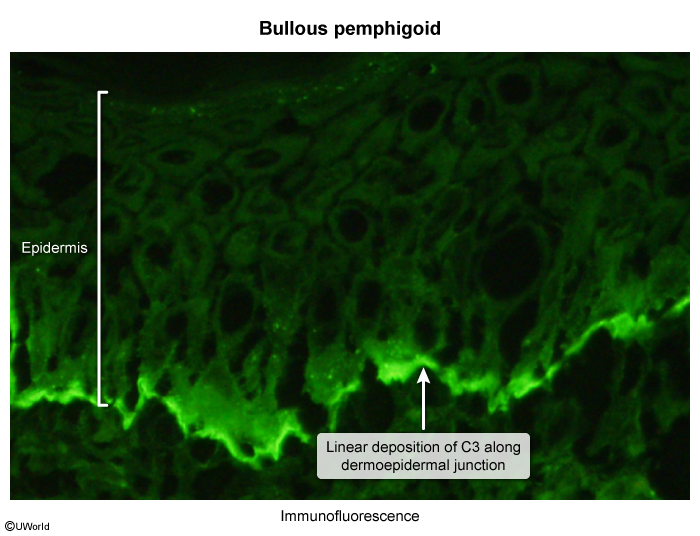
- Subepidermal vesicle formation
Prognosis
- Benign disease, usually responds well to treatment
- Blisters are deeper and more robust
Pemphigus vulgaris
Etiology
- Type II hypersensitivity reaction
- IgG antibodies directed against desmoglein 3 and desmoglein 1 in desmosome
Clinical findings
- Progression in stages
- Spontaneous onset of painful flaccid, intraepidermal blisters
- Lesions rupture and become confluent → erosions and crusts → re-epithelialization with hyperpigmentation but without scarring
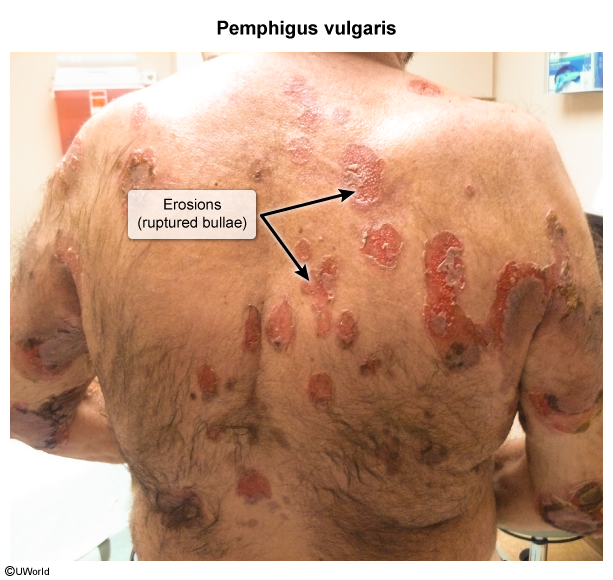
- Pruritus is typically absent.
- Lesions typically first present on the oral mucosa (> 50% of cases), then on body parts exposed to pressure (e.g., intertriginous areas)
Diagnostics
- Autoantibodies against
- Desmoglein 3 and desmoglein 1
- Tzanck test, Nikolsky sign: positive
- Histology and immunohistochemistry
- Intraepidermal vesicle formation just above the basal layer of the epidermis
- Acantholysis on biopsy: loss of intercellular connections between keratinocytes (“row of tombstones” appearance)
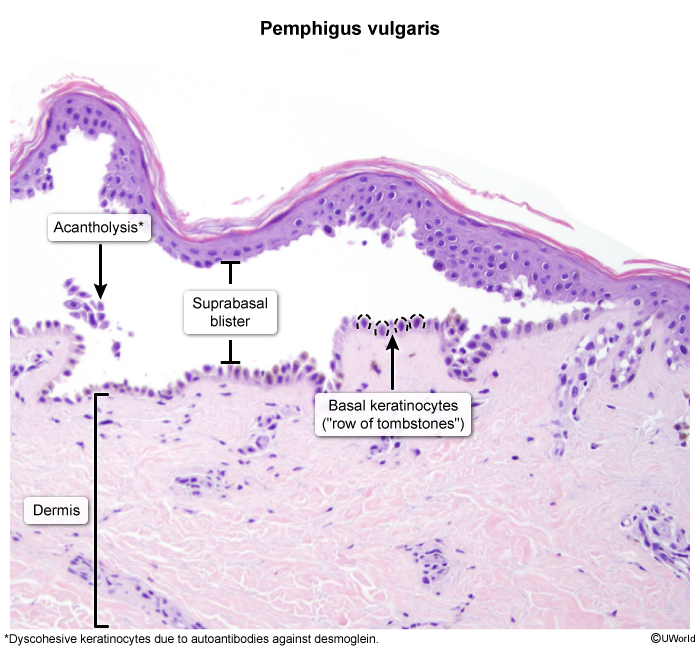
- Deposition of IgG in the intercellular spaces of the epidermis (esp. early lesions)
- Immunofluorescence: deposition of IgG in a reticular pattern around epidermal cells
Prognosis
- Often fatal without treatment!
- Caused primarily by infections, fluid loss, and electrolyte disturbances
- Fragile blisters rupture easily
- Caused primarily by infections, fluid loss, and electrolyte disturbances
Epidermolysis bullosa
- Definition: a genetic condition that causes the skin to become very fragile and blister easily in response to minor injury or friction
- Epidemiology: EBS is the most common type of EB.
- Etiology
- Autosomal dominant inheritance
- Mutations in keratin genes (e.g., KRT5, KRT14)
- Pathophysiology: mutations in keratin proteins → defective assembly of keratin filaments → disruption of the basal layer of keratinocytes → ↑ fragility of epithelial tissue
- Clinical features
- Mainly limited to the palms and soles
- Generally heal without scarring
